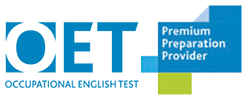The advantages of online course materials over printed coursebooks are clear from many perspectives.
- Online materials are easily accessible and given the ubiquity of both internet and phone, incredibly portable.
- Content tends to be highly visual, contain video and audio inputs, downloadable materials and links to all kinds of complementary resources.
- Tasks are engaging and interactive, as students select, sort and match, move items on the screen, write in ideas, and record their voices. Feedback is instant in most cases, and students can try again as well as see tips, explanations and answers.
- Online courses are easily updated so existing content can be improved and new materials added before being published at the click of a button.
- Content is also customisable as online modules can be rearranged, edited and added to in order to create courses which map precisely to an institution’s needs.
However, in spite of this, widespread adoption of online course materials remains elusive even with the mainstreaming of online courses as a result of the pandemic. While many teachers use online materials to supplement a printed textbook, there seem to be several questions that need resolving for a transition to online courses to take place.
Is there a clear course structure? How can I check progress? How can I see what my students have done? How can I use an online course in a classroom setting?
Let’s have a look at how these questions may be addressed.
Clarity of structure
Most teachers seem to have come to digital by using online coursebook supplements created by publishers, or finding materials such as TED Talks, YouTube videos, or lesson plans and resources from sites such as the British Council or Macmillan Education’s Onestopenglish. So, course structure has been set by an agreed textbook – and is clearly laid out in the Contents section – and online materials are then bolted on as determined by the individual teacher.
However, this is changing. Publishing houses are digitising printed courses and a growing number of publishers are creating online courses designed to be used by a teacher. While General English and IELTS preparation courses, such as those offered by Net Languages or Guided eLearning, have led the way, more specialised courses have come onto the market in recent years. These include Aviation English courses published by Latitude and Medical English and OET preparation courses published by us at SLC.
These online courses all provide a structure that teachers can take to the classroom and use as a core syllabus. Many have been written by established textbook authors who apply the same principles they do to printed textbooks – so clear focuses for each unit, plenty of scaffolding, structured language introduction, explanation and practice, ongoing progress reviews, and lots of recycling of key language inputs.
At SLC we can also rearrange and edit courses so the structure meets an institution’s specific requirements. In this way, a medical university can map their Medical English curriculum to a degree course. As demand for tailored products extends across all sectors, I can imagine that this will become increasingly expected, perhaps even the norm, over years to come.
Checking progress and student work
In principle, it’s easy to look at a student’s textbook and see what they’ve done, perhaps mark some work and add a comment or two. At least that was the case before everything went online in March 2020, when teachers had to adapt, some switching to ebook versions of textbooks, some asking students to hold the book up to the camera on Zoom, and others asking students to photograph work and submit it via email, Moodle or Google Classroom.
As remote delivery became the norm however, it became clear that teachers would greatly benefit from being able to view, mark and comment on work done by their students online. This is particularly true of online courses that are designed to be used by teachers as core course materials. Viewing what students have done, where they have been successful and where they have struggled is critical to any ongoing tutored programme planning.
The move to online during the pandemic highlighted this issue and drove rapid progress in the online platforms available to educational institutions and teachers. Avallain AG for example, one of the world’s leading online educational publishing platforms, released Magnet, a new authoring and publishing environment which allows teachers to view and download at-a-glance reports on student progress and see a student’s work as if they were the student, the equivalent of looking at student course book they have written answers in. Courses can be set for teachers to mark and comment on submitted student work, for example where they have written or recorded something. Feedback can be left, both written and spoken.
The advantage of digital is that teachers don’t need to take coursebooks home, student scores and pages are available at the click of a button, and there are no issues with handwriting or the dog having eaten the homework. Learning management systems have been increasingly incorporated into mainstream education, for example through Google Classroom, and it was only a matter of time before online courses and the management of those courses caught up.
Using an online course in a physical classroom
While online courses increasingly provide both a clear structure and easy-to-use course management tools, the practicalities of using an online course at the core of a tutored programme remain an issue in the minds of many teachers. You can’t just say, “Open the book to page 50 and do the first exercise”.
Using online courses assumes that both teachers and students can access and use them together. There are two models now being commonly used.
In-class usage. In a face-to-face classroom, teachers need an interactive whiteboard or a device linked to a projector from which they can work. Students need computers or tablets. In this scenario, teachers and students can access the online pages at the same time, in a similar way to using a textbook in class.
In practice, the teacher introduces the target language through discussion or by using the on-screen images, video or audio. Students view this on their screens, discuss it with their teacher and then do the activities set. They may submit answers and give feedback to the class – either individually or in small groups. Just as with the textbook, teachers may choose to complement online course work with additional materials, inputs and activities.
On the system we at SLC use, the teacher’s answers can be reset, allowing the activities to be done multiple times with different groups. Student attempts can be limited to an agreed number and can be reset by their teacher where appropriate.
Flipped classroom. In this approach, students work on the online course outside the lessons, for example by going through a unit on a particular set of vocabulary, doing some writing, or working on a dialogue. The teacher then activates the language covered in the lesson, discussing what they have done and asking students to use it in practical contexts, such as role plays. The students wouldn’t necessarily need their devices in the lesson, as long as the teacher can display the content for everyone to see. The teacher also has access to what students have done and can use this to plan lessons based on where areas of improvement can be identified.
To conclude
Textbooks still form the backbone of many language learning programmes. There is comfort and familiarity in using them. Many are well-written with strong supporting materials.
However, they are being increasingly challenged by online course alternatives. And as students grow up in an environment where digital is how they learn they things they want to learn – whether it be videos on how to repair a bike, websites on investing in cryptocurrency, or talks on the future of healthcare – online will inevitably be part of their learning expectations.
Teachers will therefore need the tools to enable them to give effective online courses, including what has been outlined above – well-written, well-structured programmes, the ability to see, track and mark student work, and a clear approach to teaching the content. The pandemic has pushed online delivery into the mainstream, so now it’s up to us to figure out how best to adapt and thrive in what may seem a new environment but one which brings great rewards.







